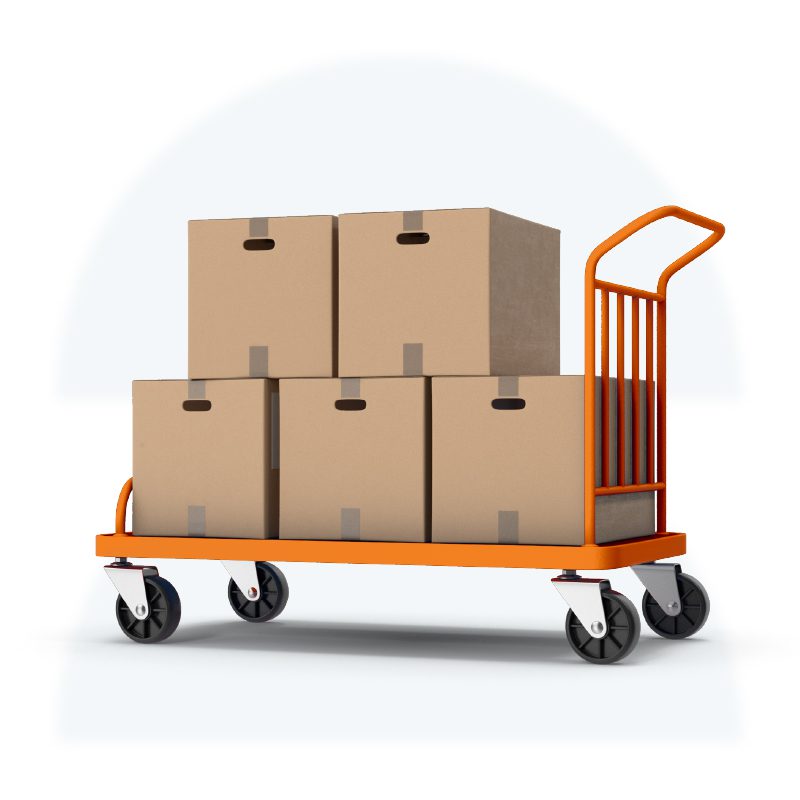In the competitive world of third-party logistics (3PL), multi-location fulfillment has become both a powerful sales tool and an operational headache.
What is multi-location fulfillment?
Multi-location (or multi-node) fulfillment is a decentralized strategy where businesses distribute inventory across multiple facilities or “nodes” rather than relying on a single warehouse.
When orders come in, intelligent routing systems like Deposco automatically determine the optimal fulfillment location based on factors like inventory availability, shipping costs, and delivery speed—bringing products closer to customers for faster, more cost-effective shipping.
Check out how Bright Order, Deposco’s order management software, can transform multi-location fulfillment for your 3PL operations.
The multi-location approach offers 3PLs a compelling value proposition: reduced shipping costs, improved delivery times, more competitive 3PL services, enhanced operational resilience against disruptions, and seamless scalability as client businesses grow.
Is multi-node your 3PL’s next differentiator?
At our recent customer advisory board, one 3PL cut through the noise with refreshing honesty about their Las Vegas facility.
“Nobody wants Las Vegas as their primary shipping spot,” he admitted. “Most people want it to service just the West Coast.” Paradoxically, that same facility has become crucial for winning business. As the customer put it, multi-location fulfillment is “table stakes… It’s what we need to be competitive in the marketplace.”
The marketing promise vs. operational reality
The multi-node pitch is seductive: offer nationwide two-day shipping, reduce transportation costs, and improve customer satisfaction. It sounds great in sales presentations and helps land new clients preparing to support their high-growth business’s future. But the reality on the ground tells a different story.
The client’s experience reveals the core challenge: “What we’re finding is that people just don’t want to split their inventory.” The math gets complicated quickly. Once your Units Per Order climbs above 2.0, “It feels impossible to split inventory because now, all of a sudden, you’re going to split-ship everything.”
A rule of thumb is the square root rule.
- If you have one site, you have x inventory.
- If you have two sites, you have 1.4x inventory.
It’s not 50/50; it’s 70/70. So multi-site can get out of control from a working capital perspective if not intelligently managed.
When multi-location makes sense for your 3PL
Despite these challenges, multi-location fulfillment can be an EBIDTA multiplier for 3PLs when looking for a buyer for their operation. In a recent conversation with FulfillYN, a matchmaking-type service connecting businesses to 3PLs, Greg Moser, Founder & CEO of ShipCalm, expands on this concept.
His tip is solid: When considering multi-location fulfillment, two critical factors drive premium 3PL valuations: facility count and tech enablement.
According to Moser, having multiple facilities without proper technology integration (“working on paper and pencil”) provides little competitive advantage or valuation upside.
However, 3PLs that combine national coverage (5-6 strategically located facilities) with high tech enablement—including automated 3PL billing, customer portals, specialized software, OCR technology, and strong EDI integration—can command significantly higher multiples, reaching into the low-to-mid teens versus the typical 3-5x EBITDA range.
Facility count
If you have up to five or six facilities and nationwide coverage, multi-location fulfillment is an attractive selling tool. What types of clients are in the sweet spot for needing multi-node? Companies with:
- High volume but low complexity (10,000+ orders/month)
- Limited SKU counts (under 500 fast-moving items)
- Simple orders (less than 2.0 units per order)
- Geographic spread (over 60% of orders beyond Zone 5)
Tech enablement with OMS
Moser’s analysis reinforces that specialized 3PL solutions that incorporate OMS are vital to successful multi-location operations. They are the differentiating factor that transforms facility expansion from a cost burden into a value driver.
Advanced order management capabilities will pay massive dividends as brands desperately seek 3PL partners who can simplify ever-evolving complexities.
OMS systems are essential for 3PLs who want to remain competitive and command premium pricing in a multi-location fulfillment landscape.

Another 3PL leader who uses Deposco said the secret is simplicity for the client. “My pitch to them is you don’t do anything. Just send one pallet of your fastest-moving product to Las Vegas, and you won’t even know that we’re shipping from there.”
Clients want more than a ‘parking lot’ for products
Safety stock bloat can quickly get out of control in a multi-location environment without order management software to simplify things. An OMS provides invisible efficiency in how you manage inventory—intelligently monitoring the flow of goods, empowering you to “pull” restock into the facility rather than the brand doing a “push” to refill the site.
You handle all the routing decisions, inventory balancing, order updates back to the channels, and delivery disciplines to minimize order splits. You’re scrambling to prevent stockouts and keep delivery promises. Technology enablement eliminates all these operational headaches for your client without the margin squeeze.
See how Deposco’s OMS software empowers multi-location fulfillment as a turnkey, warehouse-managed vs. brand-managed service.

Multi-node 3PL in practice
This hands-off approach for the client is what transforms a 3PL from a warehouse provider into an indispensable strategic partner. By handling all complexities behind the scenes, your 3PL can deliver the benefits of multi-location fulfillment without operational headaches for clients.
The bottom line
Multi-location fulfillment isn’t just about having facilities in different locations. Having modern OMS technology and expertise ensures that all your client’s inventory works smarter together no matter where it’s sourced and sold.
As our client’s experience shows, success requires understanding when to pitch multi-node as a solution versus when it’s simply a checkbox for winning business.
The verdict? Multi-location fulfillment can be a powerful 3PL services differentiator, but only if you’re honest about your fulfillment system’s capabilities and are selective about which clients will truly benefit. Need help? We’re right here.

